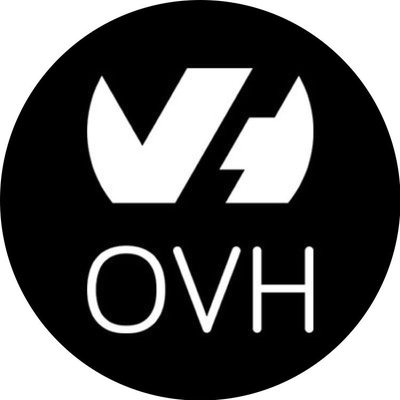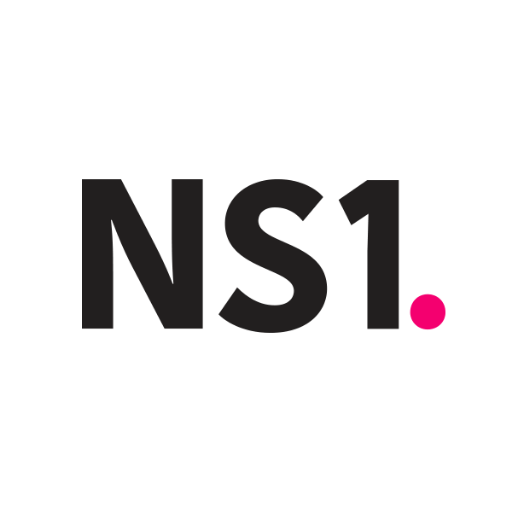OVH
Connect OVH infrastructure with Webflow to add cloud hosting, automated deployments, and scalable storage.

How to integrate OVH with Webflow
Use your existing OVH domain with Webflow hosting, or build automated workflows that connect OVH's cloud infrastructure with your Webflow site. This integration combines OVH's domain management, object storage, and CI/CD tools with Webflow's hosting and CMS.
You can connect OVH with Webflow through DNS configuration. You can also build with Webflow and OVH APIs to automate workflows with webhooks, store assets in OVH Object Storage, or automate deployments with OVH's CI/CD platform.
Connect your OVH domain to Webflow
Point your OVH domain to Webflow hosting through DNS configuration. Use OVH for domain registration and DNS management while Webflow handles hosting, SSL certificates, and CDN delivery.
To do this, access the OVH Control Panel and navigate to your Domain Names > DNS zone. Remove any existing A or CNAME records that conflict with Webflow's requirements. Add the DNS records Webflow provides in your site settings.
Here are the specific steps:
- Add A records for root domain (
@) using IP addresses from Webflow's DNS settings:75.2.70.75and99.83.190.102 - Delete your
AAAArecord andTXTrecords, if they exist - Create
CNAMErecord forwwwsubdomain pointing toproxy-ssl.webflow.comorcdn.webflow.com - Keep OVH nameservers at default settings to maintain DNS management in OVH
- Wait 48 hours for full DNS propagation, though changes often appear within one to two hours
DNS propagation depends on TTL settings and ISP caching. Use DNS checking tools like whatsmydns.net to verify records propagate correctly. SSL certificates provision automatically after DNS records point to Webflow, typically within a few hours.
Build with Webflow and OVH APIs
Connect Webflow's webhook system with OVH's infrastructure APIs to automate workflows, manage assets, and deploy sites. This approach supports real-time event handling, custom storage solutions, and integrated CI/CD pipelines.
#### Automate workflows with Webflow webhooks and OVH infrastructure
Send Webflow events to OVH-hosted services using webhook triggers. When content changes, forms submit, or orders process, Webflow sends POST requests to your OVH server endpoints.
Configure webhooks in your Webflow site settings by providing your OVH server URL and selecting trigger events. Webflow sends JSON payloads with event data that your OVH-hosted application processes.
Implementation requirements:
- Validate webhook signatures using HMAC SHA-256 authentication with
x-webflow-signatureandx-webflow-timestampheaders - Handle rate limits of 60 requests per minute per site
- Process event types including
collection_item_created,form_submission,site_publish, andecomm_new_order - Implement retry logic for failed webhook deliveries and timeout scenarios
Authentication requires timing-safe string comparison to prevent replay attacks. The x-webflow-timestamp header must be within 5 minutes of your server time. Store webhook secrets server-side only and use HTTPS endpoints exclusively.
Common integration scenarios include syncing Webflow CMS content to OVH databases, processing form submissions through OVH-hosted applications, and triggering deployment workflows when sites publish.
#### Store Webflow assets in OVH Object Storage
Connect OVH Object Storage to Webflow Cloud projects for scalable media management. OVH's S3-compatible API works with Webflow's object storage bindings to handle uploads, downloads, and asset delivery.
Setup requires a Webflow Cloud project with GitHub repository access. After you have your project set up, create an Object Storage bucket in the OVHcloud Control Panel under Public Cloud > Object Storage. Generate IAM credentials with an Access Key and Secret Key pair.
Select an OVH region close to your primary user base for better performance. US-based sites typically use BHS (Beauharnois) or GRA (Gravelines) regions. European sites perform best with GRA, RBX (Roubaix), or SBG (Strasbourg).
Then, configure Webflow Cloud:
{
"name": "your-project-name",
"compatibility_date": "2023-08-14",
"r2_buckets": [
{
"binding": "STORAGE",
"bucket_name": "your-ovh-bucket-name"
}
]
}
Storage operations:
- List files with prefix filtering using
env.STORAGE.list({ prefix: 'uploads/' }) - Upload assets with metadata and cache controls including content type and cache headers
- Delete objects using key-based removal with
env.STORAGE.delete(key) - Implement multipart uploads for files larger than 500MB to improve reliability
Image assets have a 4MB maximum size and require MD5 hash validation. Documents support up to 10MB. Enable CDN on your OVH bucket to improve delivery performance. Configure CORS settings for browser-based uploads.
The Webflow Asset API handles metadata and references while OVH Object Storage manages the actual file storage and delivery. Use byte range fetches for partial downloads and streaming scenarios.
#### Automate deployments with OVH CI/CD and Webflow
Connect OVH's CDS platform or workflow management tools with Webflow's deployment system. Build automated pipelines that deploy Webflow sites when code changes, run tests before publishing, or coordinate multi-environment releases.
OVH CDS provides open-source CI/CD with complex workflow chaining, native Git integration, and REST API access. The platform connects to GitHub, GitLab, and Bitbucket repositories that contain Webflow Cloud projects.
Deployment automation options:
- GitHub Actions integration using OVH deployment action or VPS deployment guide
- Webflow CLI deployments triggered by CDS pipeline steps after build completion
- Environment management with separate staging and production Webflow sites
- Automated rollbacks using Webflow's version control and OVH workflow triggers
Configure deployment workflows using YAML definitions in OVH CDS or OpenStack Mistral format. Trigger deployments based on Git branch updates, scheduled intervals, or manual approval gates.
Infrastructure as code tools like Terraform's OVH provider manage server provisioning alongside Webflow site deployments. Combine with the OVH API Console for programmatic server management and resource scaling.
What you can build
Integrating OVH with Webflow supports cloud-powered sites with automated workflows, scalable storage, and enterprise deployment pipelines.
- Real-time content synchronization: Connect Webflow CMS webhooks to OVH databases to mirror content changes instantly. Build a knowledge base where CMS updates trigger search index rebuilds on OVH servers.
- Automated deployment workflows: Create CI/CD pipelines using OVH CDS that deploy Webflow sites after running tests and security scans. Build a multi-environment setup with staging sites that auto-deploy to production after approval.
- Scalable media libraries: Store Webflow assets in OVH Object Storage with CDN delivery. Build a digital asset management system where editors upload through Webflow while files serve from globally distributed OVH infrastructure.
- Custom form processing: Send Webflow form submissions to OVH-hosted applications for advanced validation, CRM integration, or automated email workflows. Build contact forms that trigger custom business logic on your OVH servers.
Frequently asked questions
Access your DNS zone in OVH and add specific
AandCNAMErecords. Create threeArecords for your root domain (@) pointing to198.202.211.1,75.2.70.75, and99.83.190.102. Add aCNAMErecord for the www subdomain pointing toproxy-ssl.webflow.com. Remove any conflicting existing records before adding these entries.Keep OVH's default nameservers active to maintain DNS management in the OVH interface. DNS propagation takes up to 48 hours but often completes within 1-2 hours for most users.
SSL certificates require correct DNS records pointing to Webflow, no
CAArecords blocking certificate providers, and sufficient propagation time. Verify your DNS configuration matches Webflow's requirements using the DNS troubleshooting documentation. Check that noCAArecords exist in your OVH DNS zone that restrict certificate authorities.If you see "too many redirects" errors, configure
wwwas your default domain in Webflow's SSL hosting settings. Temporarily disable proxy services like Cloudflare during initial SSL provisioning. Certificates typically provision within a few hours after DNS records propagate correctly. Custom SSL certificates require a Webflow Enterprise plan.Use HMAC SHA-256 authentication with the
x-webflow-signatureandx-webflow-timestampheaders.Verify the timestamp falls within 5 minutes of your server time. Compute the HMAC hash using your webhook secret and compare it against the signature header. Reject requests with expired timestamps or invalid signatures. Store webhook secrets server-side only and never expose them in client code. Always use HTTPS endpoints for webhook receivers.
Yes, through Webflow Cloud projects with S3-compatible API configuration. The Webflow object storage documentation explains how to bind OVH buckets to Cloud projects using wrangler.json configuration files. Create Object Storage buckets in the OVHcloud Control Panel and generate IAM credentials with an Access Key and Secret Key.
Configure CORS settings for browser uploads and enable CDN on your bucket for improved delivery performance. Images have a 4MB maximum size with MD5 hash validation required. Documents support up to 10MB uploads. Use multipart uploads for files larger than 500MB. The Webflow Asset API handles metadata while OVH manages file storage and delivery.

Description
OVH is a European cloud infrastructure provider offering dedicated servers, VPS hosting, object storage, and enterprise DevOps tools. The platform provides RESTful APIs for server management, OpenStack-based workflow automation, and a production-grade CI/CD platform called CDS. OVH operates 43 data centers with strong European presence and S3-compatible object storage.
This integration page is provided for informational and convenience purposes only.

GoDaddy
Connect your GoDaddy-registered domain to Webflow hosting through automated DNS configuration.

Gandi
Connect Gandi with Webflow to point your registered domains to Webflow-hosted sites through DNS configuration.

GoDaddy DomainControl
Connect GoDaddy DomainControl with Webflow to manage DNS records and publish sites to custom domains.

One.com
Connect One.com with Webflow to manage domain registration and DNS configuration while hosting on Webflow's infrastructure, enabling centralized domain control with automated SSL certificates and global CDN performance.

Greenhouse
Connect Greenhouse's powerful applicant tracking system with Webflow to create dynamic career pages, automate job postings, and streamline your recruitment process. Display live job listings, collect applications, and maintain a seamless candidate experience without manual updates.

Wix DNS
Point your Wix domain name to Webflow

Squarespace Domains
Connect Squarespace Domains with Webflow to host sites on custom domains registered through Squarespace's registrar.

NS1
Connect NS1 with Webflow to manage DNS with traffic routing based on real-time telemetry and geographic data.

One.com
Point your One.com domain name to Webflow


